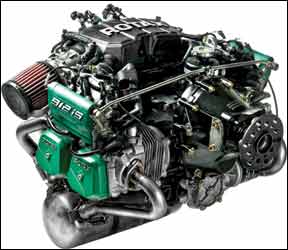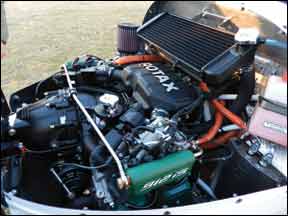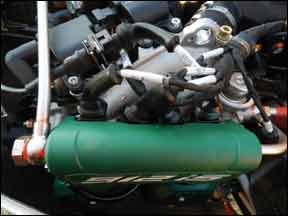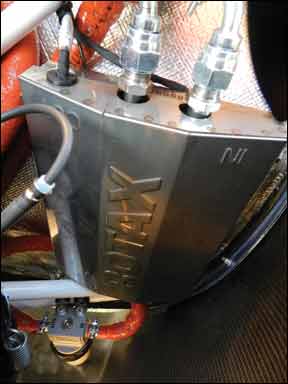With its 912-series engines, Rotax owns the light sport propulsion market. But even though the 912s are technologically more advanced than the typical Lycoming or Continental engine, buyers have been wondering when Rotax would get around to fuel injection and electronic ignition. In early March, it did just that.

At the company’s Gunskirchen, Austria, factory, it rolled out the new 912 iS, an “eco” engine with improved fuel economy, electronic fuel injection and a sophisticated, dual-channel ECU architecture with all the features you’d expect a modern aircraft engine based on automotive technology to have.
And like automotive manufacturers—at least those in Europe—Rotax is worried about the impact of emissions on its core business of producing recreational engines, so the 912 iS is being pitched as having lower CO and CO2 emissions thanks to fuel economy improved by as much as 21 percent.
It was clear during the factory tour that Rotax wasn’t launching a trial balloon. The engine emerged fully formed, with the test production line already running and at least a dozen aircraft—LSAs and ultralights—fitted with the new powerplant. The company said they’ve been flying a prototype for some three years.
A Solid Rep
In introducing the 912 iS, Rotax is building on a solid reputation for the 912/914 series engines, of which about 40,000 are in the field. These engines, in certified, LSA and experimental applications, have delivered good service and we hear very few significant complaints about them. That’s not to say they have a pristine record, since Rotax had its own go-around with crankshafts last year. But on balance, the engines have been impressively trouble free.

Rotax resisted the urge—if it had any—to start with a clean sheet on the 912 iS, so it uses the same core four-cylinder, water and oil-cooled core. The cylinder heads have improved cooling flow to provide better leaning and detonation margins, the crankcase has been beefed up some and there’s improved oil scavenging. It’s the outside of the engine that’s changed the most.
Gone are the two Bing altitude-compensating carburetors, replaced by a large plastic airbox that contains a sensor array and routes the induction into four top-down pipes running to each cylinder. The engine has a single mechanical throttle valve located upstream of the airbox.
For fueling, Rotax went with port-type fuel injection rather than direct injection. Although direct injection would have offered the option of precisely tweaking the fuel charge, Rotax evidently thought that the 912’s combustion patterns were sufficiently well-shaped as to not benefit much from a redo of the head and cylinders that direct injection might have required. It seems to have taken a “good enough” approach to the engine, which, in our view, makes sense. Why overreach and risk service issues when shorter steps will get almost as far?
But that’s not to say Rotax didn’t exercise a little creativity. Rather than just one electronic fuel injector per cylinder, it has two, mounted side-by-side on top of each cylinder. Rotax said this was done for redundancy, but we wonder if this system was also engineered to accommodate a larger engine. It’s not hard to imagine doubling the scale here and having an economical, sophisticated 200-HP engine to compete with Lycoming’s O-360 line.

Redundancy
Since Rotax plans to certify the 912 iS, it has built in the required redundancy in ways consistent with its own philosophy on engine design. The fact that it’s using automotive-grade electronic injectors bodes we’ll for reliability, since these components have been refined to the once-in-a-million failure probability.
The injectors are supplied via an automotive-style common rail system pressured at 3 bar (43 PSI) by a pair of electric fuel pumps. Both pumps are in a common metal housing mounted on the firewall. Either of the two pumps is sufficient to operate the engine.
Ignition is provided by two direct-fire type coils per side, with two automotive-type spark plugs per cylinder. The coil outputs are split between cylinders, so either one can run two cylinders on its side of the engine.
The 912 iS has dual ECUs provided by Rockwell Collins. Rotax seems to have used a slightly different strategy in setting up its ECUs. There are two modules—both housed on the same mount—labeled Lane A and Lane B. Lane A is the default, with Lane B running in constant standby and able to run the engine entirely should Lane A fail. The two ECUs are virtually identical, except that Lane B lacks some of the sensor inputs that Lane A has.

Speaking of sensors, there are a lot sprinkled around this engine. It has MAP and temperature sensors, EGT sensors for each cylinder, an external pressure sensor and even acoustic knock sensing, which Rotax says is installed but not yet programmed. That will come later, after more field experience. There are presently no CHT sensors, although that may come later, too. The primary performance feedback for the ECUs is EGT and power is calculated through a combination of throttle position sensing and MAP.
Unlike most modern cars, the 912 iS doesn’t use mass airflow sensing because, according to Wolfgang Wukisiewitsch, Rotax’s VP of product development, the induction runs are too short to provide the zonal airflow mass air sensing needs to be accurate. “Throttle position is accurate enough, and it’s more robust,” Wukisiewitsch said.
Obviously, the 912 iS is an electric engine and requires about 15 amps to operate the pumps and ECUs. It gets that power from two permanent magnet alternators mounted on the flywheel—or more accurately, the magnets are on the flywheel and the coils are fixed, immersed in oil for cooling. Alternator A has a 16-amp capacity and normally runs the pumps and ECU. It runs entirely independent of the ship’s electrical system and will generate voltage as long as the flywheel is turning.
If it fails, a second 30-amp alternator (Alternator B) comes on line automatically, switched by a smart fusebox or load center that’s part of the engine package. The fusebox also provides DC output to power ship’s systems. If more power is needed, there’s an optional 42-amp external alternator. Rotax also recommends installing a switch to connect the starting battery directly to the fusebox for tertiary backup if both alternators fail.

Economy
In the U.S., we tend to think in terms of rich- or lean-of-peak operations, but Rotax prefers the technical engineering term, Lambda. In eco mode, the 912 iS will operate close to Lambda 1, which is a stoichiometric 14.7 to 1 air-to-fuel ratio. Rotax was cagey on precise fuel scheduling, but allowed as how Lambda 1.3 (leaner) might be possible in some operating environments.
The iS has two modes, power and eco. At about 77 percent power and lower, the engine transitions automatically to eco mode. In power mode, the 912 iS will run closer to Lambda .8 or .9. The 912iS is approved for 91 AKI mogas, but Rotax, in including future knock-sensing ability, may be anticipating lower-octane fuels or it just wants more detonation margin. Or both.
Beside’s lower emissions, Rotax is also selling better fuel economy, which the engine will need to deliver because it’s going to be more expensive. At press time, we didn’t yet have precise numbers on this, but Rotech Research, the Canadian company that oversees certified sales for the Americas, estimates the 912 iS will have about a 16 percent price premium over the standard 912.
In the LSA market, this will translate into a higher price for the airplane itself. For the Pipistrel Virus, for instance, the base price with the 912 iS engine will be $113,294 versus $102,685 with the standard 912. And speaking of standard, will the 912 iS become that for the LSA world? At Pipistrel, founder Ivo Boscarol told us he thought it would, but then Pipistrel plies the efficiency market. At Gunskirchen, sentiment among the LSA makers we spoke to seemed mixed.
“It depends,” said Colin Alexander, director of a company that maintains Rotax engines in New Zealand. “I want to see if it delivers the fuel savings Rotax says it will.” We’ll know more about that soon enough, we suspect. In the meantime, what the 912 iS looks like at this juncture is progress.


